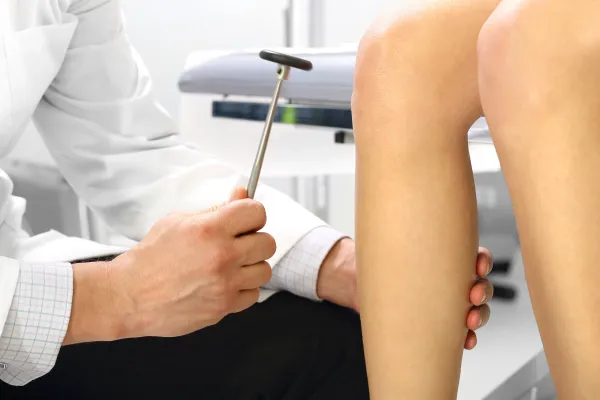Orthopedic Coding Alert
3 Myths Will Neutralize Your 99211 Mistakes Before They Happen
Hint: You can use 99211 for physicians.
Although you’re savvy when it comes to reporting those pesky fracture codes, you should not neglect your E/M coding know-how, especially when these codes are among the most reported codes in your orthopedic practice.
Before you make mistakes, bust these 3 myths about 99211 and arm yourself before a denial lands on your desk.
Code 99211 (Office or other outpatient visit for the evaluation and management of an established patient, that may not require the presence of a physician or other qualified health care professional. Usually, the presenting problem(s) are minimal. Typically, 5 minutes are spent performing or supervising these services …), sometimes referred to as the “nurse visit” code, isn’t just for nurses; any qualified auxiliary personnel the physician employs can report 99211; including the physician. This includes medical assistants (MAs), licensed practical nurses (LPNs), technicians, and other aides who work directly under the physician’s supervision.
Read on for all the info you’ll need to appropriately report 99211 in your practice.
Myth #1: Only Nurses Can Use 99211
Truth: Maggie M. Mac, CPC, CEMC, CHC, CMM, ICCE, AHIMA-approved ICD-10 CM/PCS trainer and president of Maggie Mac-Medical Practice Consulting in Clearwater, Fla., emphasizes that although 99211 can be utilized for nurse visits, nurses are not the only providers who can use the code.
“It’s still appropriate for a physician or nurse practitioner to use the 99211 if that’s all that their documentation and medical necessity actually meets,” says Mac. “So, [99211] is not just a nurse E/M service.”
Melanie Witt, RN, CPC, MA, an independent coding expert based in Guadalupita, N.M. echoes Mac’s thoughts about who can report 99211.
“While we usually refer to 99211 as a ‘nurse only’ visit, there are times when a billing provider has only documented this level of service (rather than, say a 99212) if that provider did not perform an exam or take a history and only documented medical decision making (for example),” says Witt.
Myth #2: You Can Use 99211 for New Patients
Truth: You should report 99211 only for established patients — never new patients.
CPT® defines an established patient as one who has received professional (face-to-face) services from the physician/qualified healthcare professional or another physician/qualified healthcare professional of the exact same specialty and subspecialty who belongs to the same group practice, within the past 36 months (three years).
“Use of 99211 is strictly for established patients — never a new patient since there must be a plan of care with the plan documenting a brief follow-up E/M encounter,” says Catherine Brink, BS, CMM, CPC, president of Healthcare Resource Management in Spring Lake, N.J.
“This follow-up E/M can be performed incident-to, meaning not requiring a physician to perform the service.”
Shannon O. DeConda, CPC, CPC-I, CEMC, CEMA, CPMA, partner at DoctorsManagement, and president of NAMAS in Melbourne, Fla., agrees that 99211 must only be used for established patients.
“99211 is only for established patient’s because it is technically performed incident-to, meaning the ancillary staff nurse will be using the supervising provider’s billing information to get the practice paid for the work,” says DeConda. “In order to meet the guidelines associated with incident-to, the patient must have a plan of care that has already been created by a supervising provider. The nurse would be providing following services directly indicated and/or appropriate to the plan of care.”
Myth #3: Provider Does Not Have to Be in the Office for Incident-to
Truth: That is inaccurate. We’ve briefly mentioned “incident-to,” so let’s look at the term in regard to 99211.
Incident-to, in relation to the 99211 service, according to Mac, means that a provider (the nurse practitioner, PA, physician, etc.) previously saw a patient, and the patient is returning for a specific service based upon the treatment plan developed that previous visit.
When the patient returns to the office for the specific service, the physician must be immediately available within the office. Although the physician doesn’t have to see the patient, the physician must be present in the office suite to provide the required supervision. This is referred to as direct supervision, says Mac.
Important: If the same physician who provided the original order is not the supervising physician during the patient’s return visit, the service must be billed under the physician who is supervising the day that the patient returns. So, the physician could be different, according to Mac.
Look to this example from Mac regarding how to properly report a 99211: The physician’s treatment plan states that he wants the patient to come back for a blood pressure check and assess whether he is having problems with his medications. The patient returns to the office, and his blood pressure has improved. Also, his medications are not bothering him. The provider (perhaps the nurse or medical assistant) documents that she saw the patient, took his blood pressure, and he is doing fine with his medications. The provider must report all of this information to the physician. So, although the physician doesn’t have to see the patient, he must receive that information about the encounter from the provider. The 99211 could then be billed under the physician who provided the supervision and was in the office that day.
Related Articles
Orthopedic Coding Alert
- Hips:
3 Elements To Ethically Maximize Your Bottom Line for Traumatic Hip Dislocation Procedures
If you miss the difference between 27250 and 27252, you could miss out on almost [...] - Injuries:
'Tis the Season for Biking Accidents: Common Ailments and How to Code for Them
Here are three tips for reporting Lisfranc injuries. The sun is out. People are on [...] - E/M:
3 Myths Will Neutralize Your 99211 Mistakes Before They Happen
Hint: You can use 99211 for physicians. Although you’re savvy when it comes to reporting [...] - You Be the Coder:
Compare Extensive Versus Limited Debridement
Question: I’m not sure if I should use the extensive debridement code or the limited debridement [...] - Reader Question:
Check Extent of Erosion in Tumor Excision
Question: Our surgeon did a planned release of an A-1 pulley with excision mass over DIP [...] - Reader Question:
Do Not Treat Accessory Soleus as Soft Tissue Tumor
Question: How do we code for excision of accessory soleus muscle in leg? Can we report [...] - Reader Question:
Look At Global Period For Repeat Drainage Of Finger Abscess
Question: For a patient who reported back to the ED for a wound check following drainage [...]




